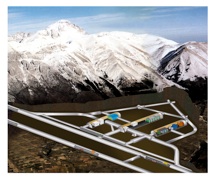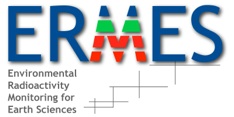
The Gran Sasso National Laboratory - National Institute of Nuclear Physics (LNGS-INFN) is located inside the largest aquifer of the Central Italy. The hydrological and hydrogeological properties have been monitored and studied during construction of the highway tunnel and LNGS-INFN. These studies have emphasized a complex structure of aquifer due to geological and lithological settings. The presence of semi-permeable and / or impermeable structures produce different hydrologic and geochemical patterns in the various compartments of the aquifer.

The cosmic noise reduction observed at the LNGS-INFN makes it possible to perform high precision 14C measurements and ERMES extended the present maximum dating limit from 58,000 BP to 62,000 BP (5 mL, 3 days counting).
ERMES applied to Fluid Earth Physics, particularly to lagrangian atmospheric transport modelling and oceanic benthic boundary layer confirmed the unique opportunity to perform radioactivity measurements in an ultra low level background environment such as LNGS-INFN.
